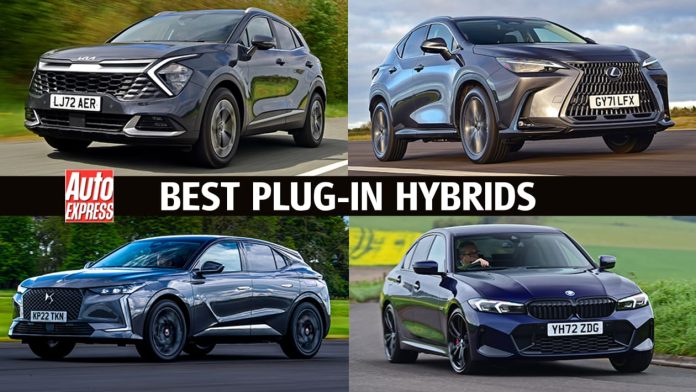In addition to cutting down on their fuel bills, company-car drivers will be elated by the five-per-cent Benefit-in-Kind tax band the C 300 e falls into.
Its styling has been influenced by Mercedes’ flagship S-Class, as has the interior that feels almost as plush as the limousine’s. That car’s incredibly slick and intuitive MBUX infotainment system is fitted, too, displayed on a fantastic 11.9-inch touchscreen that’s standard on every model.
One of the downsides of the Mercedes is its price tag. Before you spec any options or packs, a C 300 e will already set you back more than £45,000.
Best plug-in hybrid cars
- Mercedes C 300 e
- BMW 330e
- Kia Sportage PHEV
- Skoda Octavia iV
- Suzuki Across
- Toyota RAV4
- Range Rover Sport P460e
- Lexus NX 450h+
- DE 4 E-Tense 225
- Renault Captur E-Tech PHEV
Should you buy a plug-in hybrid?
With many manufacturers having now joined the PHEV arms race, there’s a huge array of models to choose from – from small, cheaper options to large family hatchbacks and even luxury SUVs and estates, so there’s probably a plug-in hybrid out there to suit your lifestyle.
Fitted with larger battery packs, plug-in hybrids can run on pure electric power for longer than conventional hybrid cars – with some models offering over 50 miles of range, although many will cover 20-30 miles using the battery alone. This makes them ideal for drivers who cover lower mileages or spend the majority of their time in cities and urban environments.
Plug-in hybrids are proving popular for a number of reasons. As technology improves and more manufacturers are offering plug-in hybrids as part of car lineups, the price you pay for a plug-in vehicle is gradually coming down. Then there are the tax implications, with many plug-ins offering lower first year VED road tax rates than their combustion counterparts. Benefit-in-Kind rates for company car users are also lower, thanks to low emissions, but full EVs are where the big savings are to be made. .
A close second to the low running costs is the fact that this hybrid kit doesn’t require you to compromise on the way you use your car. The key is to remember to plug the car into a charging point wherever possible to maximise the amount of electric running you do, but if you can’t charge, the car just reverts to its internal-combustion engine. If you think of your car like a smartphone, and get into the habit of plugging it in overnight to charge, then you’ll soon see the lower costs that electric driving can bring. However, failing to keep the battery charged will probably see economy drop to potentially worse levels than an equivalent non-hybrid model.
If you’re thinking of making the switch to electric, read our list of the best electric cars to buy.









